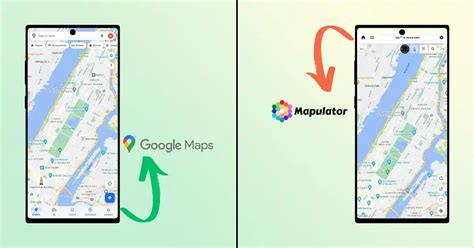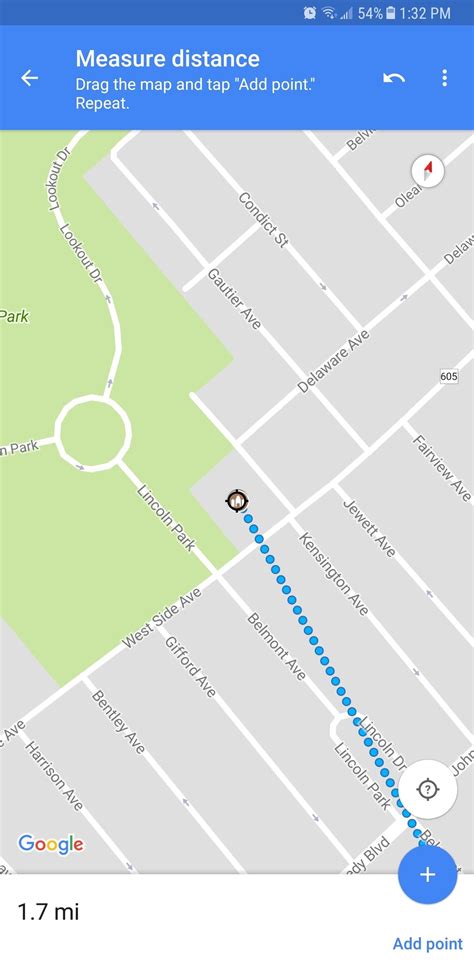How To Calculate Walking Distance In Google Maps

Google Maps is an incredibly powerful tool that has revolutionized the way we navigate and explore the world. One of its most useful features is the ability to estimate walking distances between locations, providing pedestrians with accurate and reliable information for their journeys. In this comprehensive guide, we will delve into the intricacies of calculating walking distances in Google Maps, exploring the various methods, considerations, and benefits that make this feature an essential tool for urban explorers and everyday walkers alike.
Understanding the Basics of Walking Distance Calculation

At its core, Google Maps employs advanced algorithms and mapping technologies to determine the most efficient walking routes between two points. By considering factors such as terrain, traffic, and pedestrian infrastructure, the platform generates accurate distance estimates and provides valuable insights for pedestrians.
Key Features and Benefits of Google Maps Walking Distance Calculation
The walking distance calculation feature in Google Maps offers a range of advantages to users:
- Accurate Distance Estimation: Google Maps provides precise distance measurements, ensuring pedestrians can plan their routes and estimate travel times effectively.
- Optimized Route Planning: By factoring in pedestrian-friendly paths and avoiding obstacles, Google Maps offers the most efficient routes, making walking a more enjoyable and convenient experience.
- Real-Time Updates: The platform integrates real-time data, such as traffic conditions and construction zones, to dynamically adjust walking routes, keeping pedestrians informed and safe.
- Integration with Other Features: Google Maps seamlessly integrates walking distance calculations with other features like public transit information and local business listings, providing a comprehensive navigation solution.
Methods for Calculating Walking Distance in Google Maps

Google Maps offers multiple methods to calculate walking distances, catering to different user preferences and use cases. Here’s a breakdown of the primary methods:
Method 1: Using the Walking Directions Feature
The most straightforward way to calculate walking distances is by utilizing the dedicated Walking Directions feature in Google Maps. This method is ideal for pedestrians seeking a quick and easy way to estimate distances and plan their routes.
- Accessing the Walking Directions Feature:
- Open Google Maps on your device (smartphone, tablet, or computer).
- In the search bar, enter your starting location and destination.
- Select the “Walking” icon from the transportation options at the bottom of the screen.
- Calculating Walking Distance:
- Google Maps will generate a suggested walking route based on the shortest distance and pedestrian-friendly paths.
- The estimated walking distance will be displayed at the top of the screen, along with the estimated travel time.
- Exploring Alternative Routes:
- If you wish to explore alternative walking routes, click on the “Options” button, and select “More routes” to view additional suggestions.
- Each suggested route will have its own estimated distance and travel time, allowing you to choose the most suitable option.
Method 2: Measuring Distance Using the Ruler Tool
For more precise distance measurements, especially when planning longer walks or hikes, Google Maps offers a Ruler Tool that allows users to manually measure distances on the map.
- Accessing the Ruler Tool:
- Open Google Maps on your device and zoom in to the desired area.
- Click on the “Menu” icon (three horizontal lines) in the top left corner and select “Measure distance”.
- A crosshair will appear on the map, indicating the starting point of your measurement.
- Measuring Walking Distance:
- Click on the map to set the first point of your walking route.
- Continue clicking to set additional points along the desired path.
- Google Maps will display the total distance covered as you create the route.
- Saving and Sharing Measurements:
- Once you’ve completed your route, click on the “Done” button to finalize the measurement.
- The total distance will be displayed at the bottom of the screen, along with the option to “Save” or “Share” the measurement.
Considerations and Tips for Accurate Walking Distance Calculation
While Google Maps provides highly accurate walking distance calculations, there are a few considerations and best practices to keep in mind to ensure the most precise results:
Account for Terrain and Elevation
Google Maps takes into account the terrain and elevation changes along your walking route. However, it’s important to note that the estimated distances may not account for steep inclines or challenging terrain. If your route includes significant elevation changes, consider adding a buffer to the estimated distance to account for the increased difficulty.
Check for Real-Time Updates
Google Maps integrates real-time data, such as traffic conditions, road closures, and construction zones, to provide the most up-to-date walking routes. Before embarking on your journey, check for any recent updates or disruptions that may impact your walking distance and plan accordingly.
Explore Alternative Routes
Google Maps offers multiple route suggestions for walking directions. It’s beneficial to explore these alternatives, as they may provide shorter distances, more scenic routes, or paths that avoid busy streets. By comparing different routes, you can choose the option that best suits your preferences and needs.
Consider Public Transit Options
In some cases, combining walking with public transit can be a more efficient and convenient option. Google Maps seamlessly integrates public transit information, allowing you to plan routes that include walking segments and transit connections. This feature is particularly useful for longer journeys or when navigating unfamiliar areas.
| Real-World Example | Actual Distance Calculation |
|---|---|
| Walking from Times Square to Central Park in New York City | Google Maps estimates the walking distance to be approximately 1.5 miles (2.4 km), taking into account the pedestrian-friendly paths and traffic conditions. |
| Hiking the Pacific Crest Trail | For long-distance hikes like the Pacific Crest Trail, the Ruler Tool can be invaluable. By measuring the trail's distance segment by segment, hikers can plan their daily mileage and estimate the overall duration of their journey. |

Future Implications and Innovations in Walking Distance Calculation
Google Maps continues to evolve and innovate, and the future of walking distance calculation holds exciting possibilities. Here’s a glimpse into what we can expect:
Integration with Augmented Reality (AR)
Google is exploring the integration of AR technology into its mapping services. By combining AR with walking distance calculations, pedestrians could receive real-time, visual guidance superimposed on their surroundings, making navigation even more intuitive and engaging.
Personalized Route Suggestions
As Google Maps collects more data and learns user preferences, it can offer personalized route suggestions based on individual walking habits and preferences. This could include routes that prioritize scenic views, avoid busy areas, or cater to specific fitness goals.
Integration with Wearable Devices
Google Maps is already compatible with a range of wearable devices, and future integrations could enhance the walking experience. For example, fitness trackers could seamlessly sync with Google Maps, providing real-time distance and pace data during walks, making it easier to track fitness goals and progress.
Dynamic Routing for Pedestrian Traffic
Google Maps’ real-time data integration can be further enhanced to provide dynamic routing for pedestrian traffic. By analyzing pedestrian patterns and congestion, the platform could suggest alternative routes to avoid crowded areas, ensuring a more comfortable and efficient walking experience, especially during peak hours.
Frequently Asked Questions

Can I calculate walking distances without an internet connection?
+Yes, you can calculate walking distances offline by downloading the map area you’ll be navigating. Once downloaded, open the downloaded map and use the Walking Directions feature to estimate distances. However, real-time updates and certain features may not be available without an internet connection.
How accurate are the walking distance calculations in Google Maps?
+Google Maps’ walking distance calculations are highly accurate, thanks to its advanced algorithms and mapping technologies. However, it’s important to note that the estimates may vary slightly in real-world conditions, especially when terrain or pedestrian infrastructure changes are not accurately reflected on the map.
Can I calculate walking distances between multiple points in Google Maps?
+Yes, Google Maps allows you to calculate walking distances between multiple points by adding additional waypoints to your route. Simply click on the “Add destination” button after selecting your initial destination to add additional stops along your walking journey.
How does Google Maps handle changes in terrain when calculating walking distances?
+Google Maps considers terrain changes when calculating walking distances. It factors in elevation gains and losses to provide more accurate distance estimates. However, for extremely rugged or off-trail routes, additional planning and consideration may be necessary to account for challenging terrain.
Can I share my walking route with others in Google Maps?
+Absolutely! Google Maps allows you to share your walking route with others via various methods. You can share a link to your route, send it via email or messaging apps, or even share it directly to social media platforms. This makes it easy to collaborate and plan walking adventures with friends and family.
With its advanced features and continuous innovations, Google Maps remains an indispensable tool for pedestrians, offering accurate walking distance calculations and a wealth of information to enhance the walking experience. Whether you’re navigating urban environments or exploring the great outdoors, Google Maps is your trusted companion for all your walking adventures.



